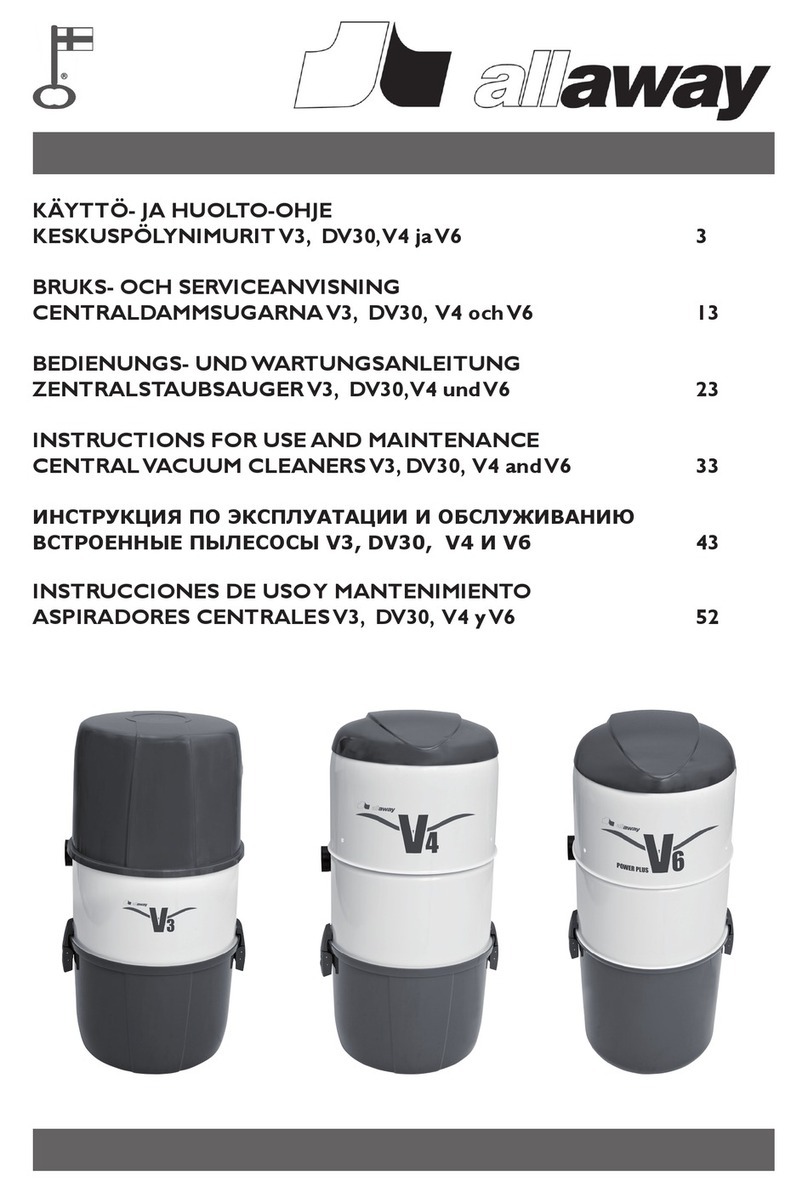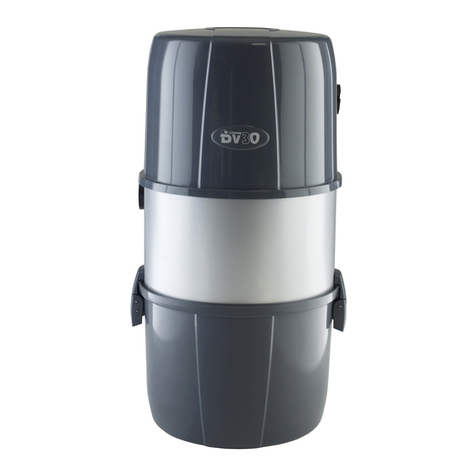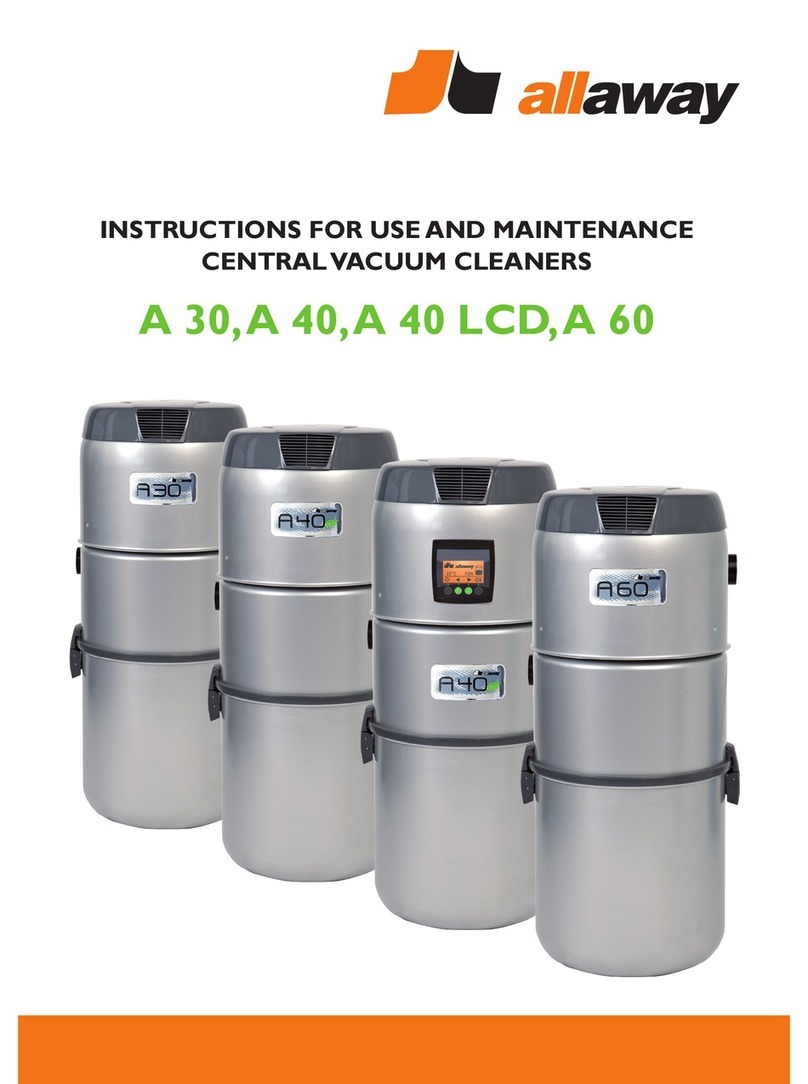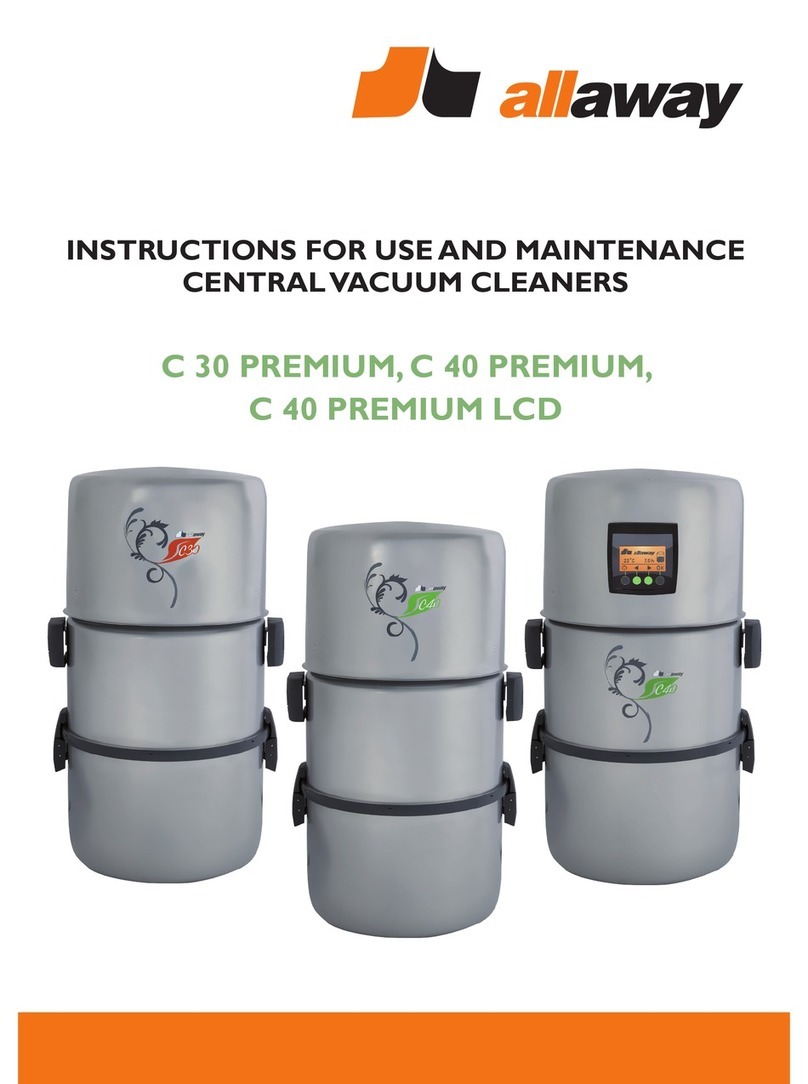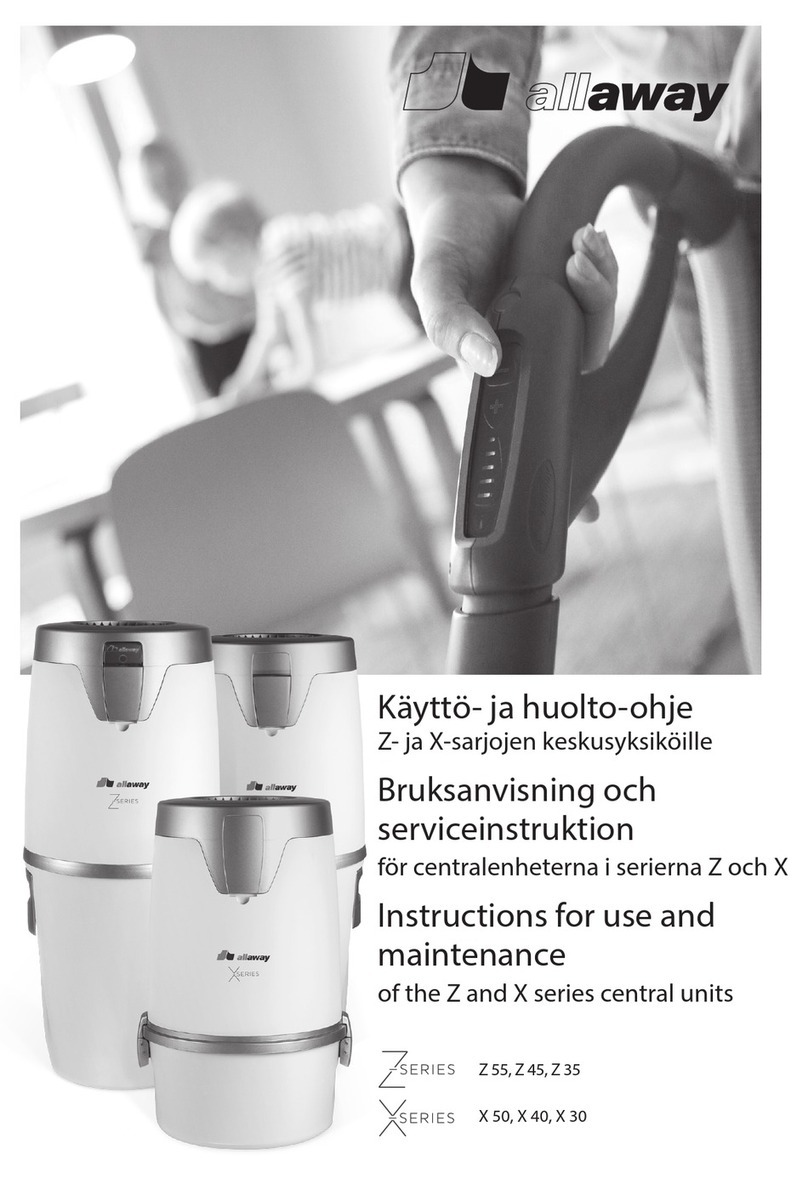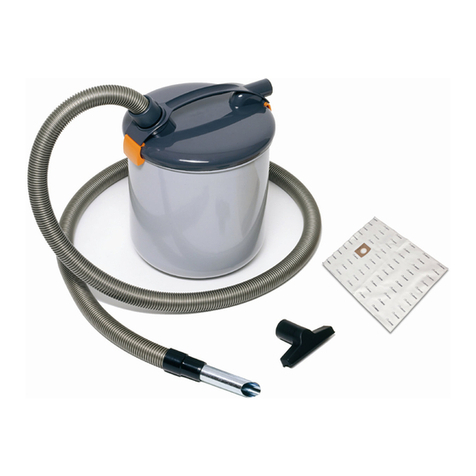
We reserve the right to make changes.
1. Usages................................................................................................................................................. 3
2. Legislation and regulations............................................................................................................... 3
3. The Manta central vacuum cleaning system ................................................................................... 3
3.1. System for one user......................................................................................................................3
3.2. System for several users .............................................................................................................. 4
4. Technical information for the central units...................................................................................... 6
5. Selecting the central unit................................................................................................................... 7
6. Location of the central unit ............................................................................................................... 8
6.1. Length of the dust piping ..............................................................................................................8
6.2. Requirements for the location of the central unit .......................................................................... 8
6.3. Maintenance operations on the central unit.................................................................................. 8
6.4. Ventilation of the location of the central unit ................................................................................. 8
7. Dust piping.......................................................................................................................................... 9
7.1. Features of the dust pipes ............................................................................................................ 9
7.2. Parts of the dust piping ................................................................................................................. 9
8. Installing the dust piping................................................................................................................... 9
8.1. Attaching the pipes .......................................................................................................................9
8.2. Supporting .................................................................................................................................. 10
8.3. Hung ceiling ............................................................................................................................... 11
8.4. Cast oor ................................................................................................................................... 11
8.5. Hollow core slab ........................................................................................................................ 11
8.6. Other solutions ........................................................................................................................... 11
8.7. Leadthroughs in compartmentation structures .......................................................................... 11
8.8. Leadthrough to the air-raid shelter.............................................................................................. 11
8.9. Expansion joint ........................................................................................................................... 11
9. Chanelling the exhaust air............................................................................................................... 12
10. Installing the wall inlets ................................................................................................................. 12
10.1. Installation frequency and height .............................................................................................. 13
10.2. Installation locations of the wall inlets....................................................................................... 13
10.3. Wall inlet models....................................................................................................................... 13
10.4. Installing the wall inlet to a slab wall using a mounting plate.................................................... 14
10.5. Beam thickness in ush mounting ............................................................................................ 15
10.6. Installing a wall inlet on cast walls or oors .............................................................................. 16
10.7. Installing the wall inlets to brick walls ....................................................................................... 16
10.8. Surface mounting of wall inlets ................................................................................................. 17
10.9. Shortening the coupling muff for the wall inlet .......................................................................... 17
11. Starting circuit and turning on the system .................................................................................. 17
12. Connecting the central unit to the dust piping............................................................................ 18
13. Testing the system ......................................................................................................................... 18
14. The Manta APC 3 central unit........................................................................................................ 19
14.1. The automatic power control in the Manta APC 3 central unit ................................................. 19
14.2. Preset rotation speeds.............................................................................................................. 19
15. Model of the work specication for the central vacuum cleaning system ............................... 20
Contents

